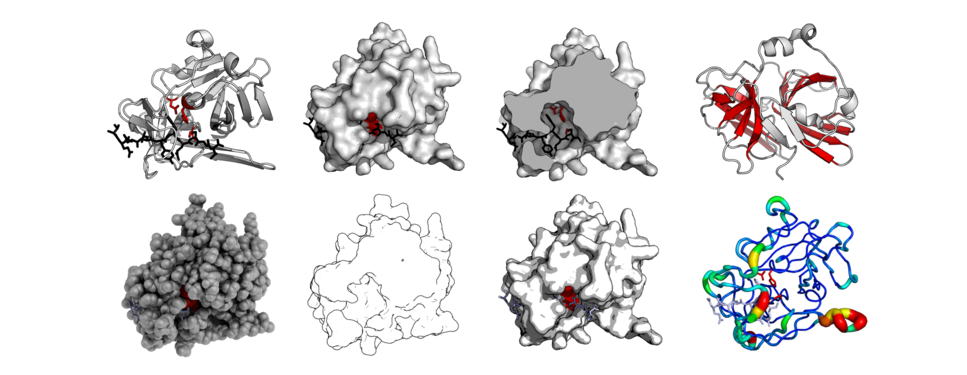PyMOL facts for kids
 |
|

A PyMOL instance, with the Viewer and GUI visible.
|
|
| Original author(s) | Warren Lyford DeLano |
|---|---|
| Developer(s) | Schrödinger, Inc. |
| Initial release | 2000 |
| Stable release |
3.1.0 / Lua error in Module:Wd at line 1575: attempt to index field 'wikibase' (a nil value).
|
| Written in | C, C++, Python |
| Operating system | Cross-platform: macOS, Unix, Linux, Windows |
| Platform | IA-32, x86-64 |
| Available in | English |
| Type | Molecular modelling |
| License | Originally the Python License, now proprietary |
PyMOL is a special computer program that helps scientists and students see tiny things like molecules and proteins in 3D. Imagine being able to look at the building blocks of life up close! PyMOL lets you do just that, creating amazing pictures of these tiny structures. It's a very popular tool used in structural biology, which is the study of how biological molecules are built.
The name PyMOL comes from "Py" for Python, which is the computer language it's mostly written in, and "MOL" for molecule. PyMOL is one of the main tools for seeing 3D models in structural biology.
PyMOL uses special computer graphics tools like OpenGL Extension Wrangler Library (GLEW) to show these amazing 3D images. It also uses a system called PyQt to create its user interface, which is what you see and click on when you use the program.
History and how PyMOL became available
PyMOL was first created by a scientist named Warren Lyford DeLano. He wanted to make a tool that everyone could use for science and learning. Early versions of PyMOL were available for free under a special kind of permission called the Python License.
Over time, the way PyMOL was shared changed. Starting in 2006, DeLano Scientific, the company that made PyMOL, began to offer special versions that required people to sign up or pay. However, much of the program's original code remained available for free. This meant that people could still get older versions or build the program themselves from the free code.
In 2010, another company called Schrödinger, Inc. took over PyMOL. They continued to develop and support the program. In 2017, Schrödinger released PyMOL version 2. This new version brought updates to how the program looked and worked. While much of the code is still available, some new features might have a watermark or require a license after a trial period.
How PyMOL uses colors for elements
PyMOL helps you understand molecules by coloring the different parts based on what chemical element they are. For example, carbon atoms might be one color, and oxygen atoms another. This makes it easier to see the different parts of a molecule.
Gallery
See also
 In Spanish: PyMOL para niños
In Spanish: PyMOL para niños
- List of molecular graphics systems
- Molecular modelling
- Gabedit
- Molden
- Molekel
- RasMol
- SAMSON
- UCSF Chimera
- List of free and open-source software packages


